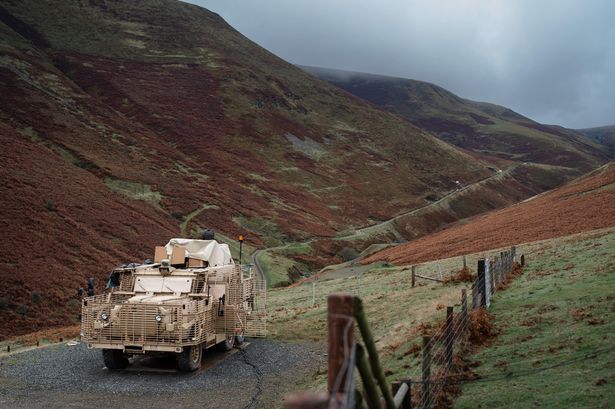The British Army has marked a significant milestone in military technology by conducting the first live firing of the Dragonfire laser weapon system, a directed energy weapon (DEW) developed as part of the Novel Weapons Programme. This groundbreaking event took place at Radnor Range in Wales, demonstrating the system’s potential to revolutionize air defence and counter-drone operations. Mounted on a British Army Boxer armoured vehicle, Dragonfire showcased its ability to precisely target and neutralize unmanned aerial systems (UAS), commonly known as drones, posing a growing threat in modern warfare. This successful firing represents a crucial step towards integrating laser weapons into the British Army’s arsenal, offering a cost-effective and highly accurate alternative to traditional kinetic weapons for countering small, fast-moving aerial threats.
The Dragonfire laser weapon system is a collaborative effort by a consortium of leading UK defence companies, including MBDA UK, Leonardo UK, QinetiQ, and Dstl. This partnership brings together a wealth of expertise in laser technology, systems integration, and military applications, ensuring the development of a robust and highly effective weapon system. Dragonfire operates by emitting a high-energy laser beam that can be precisely directed onto a target, causing intense heat and ultimately disabling or destroying it. The system’s advanced tracking and targeting capabilities allow it to effectively engage small, agile drones, even at high speeds and in challenging environments. This precision targeting minimizes collateral damage and offers a significant advantage over traditional air defence systems, particularly in urban or densely populated areas.
The firing trials at Radnor Range served as a critical test of Dragonfire’s capabilities in a realistic operational environment. The trials involved engaging various representative drone targets, demonstrating the system’s effectiveness in different scenarios. The tests rigorously assessed the weapon’s precision, range, and its ability to operate under varying weather conditions. Data collected from these trials will be crucial in refining the system’s performance and further developing its operational capabilities. The success of these trials not only validates the technology’s potential but also provides valuable insights for the continued development and integration of Dragonfire into the broader British Army force structure.
The adoption of directed energy weapons like Dragonfire represents a paradigm shift in military technology, offering several key advantages over conventional weapons systems. Firstly, laser weapons offer a significantly lower cost per shot compared to traditional missiles or artillery shells. This cost-effectiveness is especially relevant in countering swarms of inexpensive drones, where using conventional munitions can quickly become prohibitively expensive. Secondly, laser weapons offer near-instantaneous engagement, allowing for rapid reaction times against fast-moving aerial threats. The speed of light engagement minimizes the time for the target to manoeuvre or escape, significantly increasing the probability of a successful interception. Thirdly, laser weapons boast a virtually unlimited magazine capacity, limited only by the power source. This eliminates the logistical challenges associated with transporting and storing large quantities of ammunition, simplifying operations and enhancing battlefield endurance.
The integration of Dragonfire into the British Army’s arsenal has significant implications for future military operations. Its ability to effectively counter the growing threat of drones enhances force protection and provides a crucial defensive capability. Drones are increasingly being used for reconnaissance, surveillance, and even attacks, posing a significant challenge to conventional air defence systems. Dragonfire’s precision and speed offer a highly effective means of neutralizing these threats, protecting valuable assets and personnel. Furthermore, the system’s potential extends beyond counter-drone operations. Future developments may see laser weapons used for engaging other aerial threats, such as helicopters or fixed-wing aircraft, and potentially even against ground targets. This versatility makes Dragonfire a valuable addition to the British Army’s evolving capabilities, offering a flexible and adaptable solution for a wide range of operational scenarios.
The successful firing of the Dragonfire laser weapon system marks a significant achievement for the British Army and the UK defence industry. This pioneering technology places the UK at the forefront of directed energy weapon development, showcasing the nation’s commitment to innovation and maintaining a cutting-edge military capability. The development and deployment of such advanced weapon systems are critical for ensuring the British Army’s continued effectiveness in the face of evolving threats and the changing landscape of modern warfare. As drone technology proliferates and becomes increasingly sophisticated, laser weapons like Dragonfire will play a crucial role in maintaining a robust and resilient defence posture. The lessons learned from these initial trials will inform future development and refinement, paving the way for the wider integration of laser weapons and solidifying the UK’s position as a leader in this transformative military technology. While still in its early stages of development, Dragonfire offers a glimpse into the future of warfare, where directed energy weapons will undoubtedly play a prominent role.














